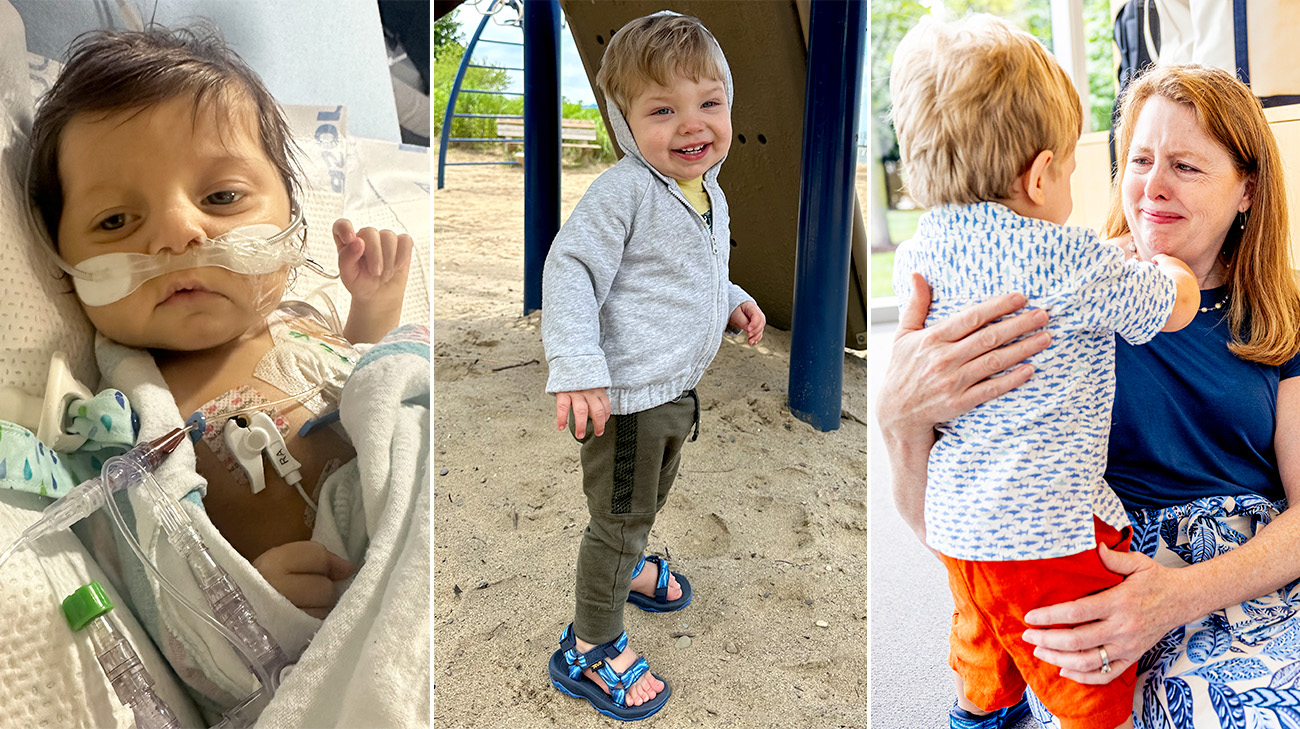
When Sandy Flash first saw Sonny’s bright smile, she knew her decision to become a living organ donor was all worth it. Sonny’s mom, Katie White, was overwhelmed to meet the stranger who had selflessly donated a portion of her liver to save her son.
“Sandy gave a piece of herself to save my baby’s life. Organ donation is truly an unconditional gift, and there's not a lot of things in life that are unconditional these days," says Katie.
“Next to having my own children, this is the most fulfilling thing I’ve ever done. Knowing I was able to help take away this family’s fears and give them hope meant the world to me,” says Sandy.
After Sonny was born, doctors diagnosed him with biliary atresia, a condition that affects liver function. Bile normally flows from a baby’s liver to the small intestine, but with biliary atresia, a baby’s bile ducts become blocked. In turn, bile builds up in the liver and damages it.
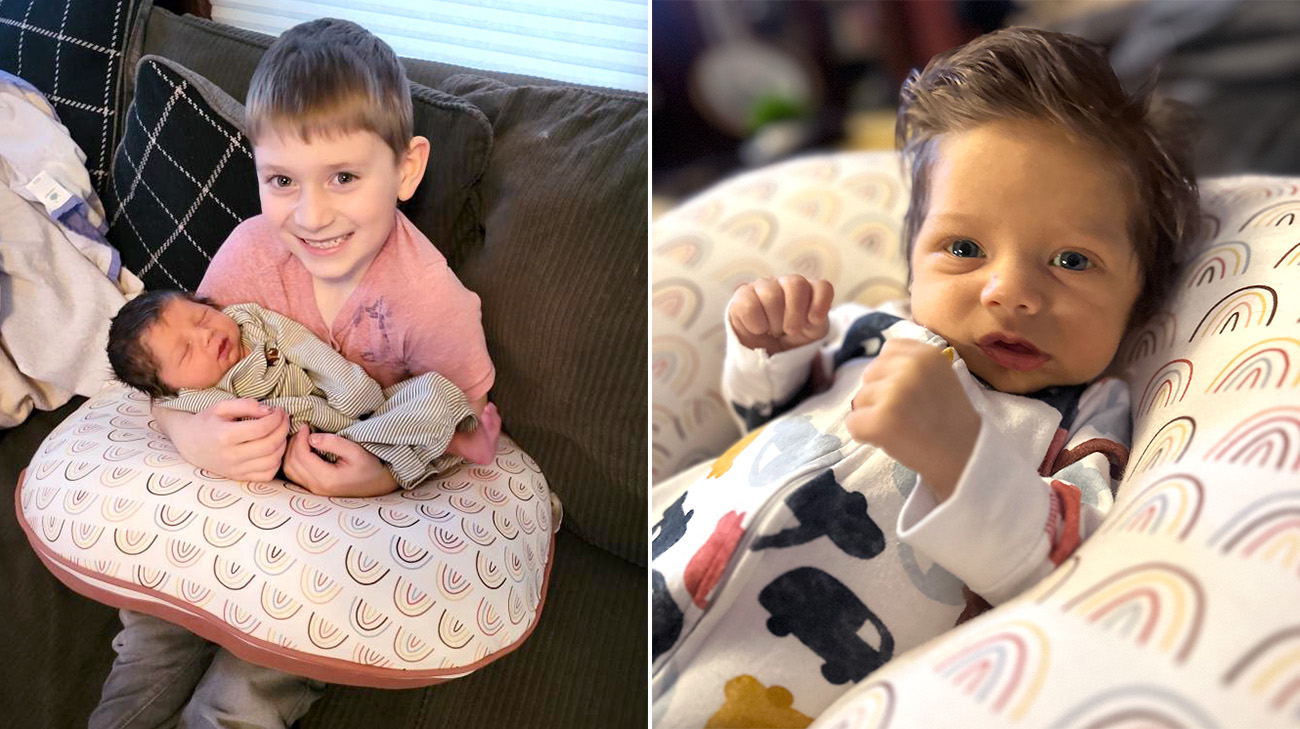
As Sonny got acquainted at home with his family, including his brother, Warren, they never expected him to have to be hospitalized shortly after birth. (Courtesy: Katie White)
“Sonny was a healthy baby at birth and then developed progressive jaundice from biliary atresia. At about 2 months of age, he needed a surgical procedure,” says Sonny’s Cleveland Clinic Children's pediatric gastroenterologist and transplant hepatologist Deborah Goldman, MD.
Sonny underwent the Kasai procedure, where a surgeon removes the blocked ducts in the liver and uses a portion of the small intestine to create a new path for bile to drain properly. However, if the procedure doesn’t work and the baby’s bile ducts are still blocked, they’ll likely need a liver transplant. This outcome isn’t uncommon, with about half of the babies who undergo the surgery needing a liver transplant by age 2.
“Biliary atresia is the most common indication for liver transplant in children. Things for Sonny really didn't improve after the surgery, and he progressed to develop cirrhosis of the liver, or end-stage liver disease,” says Dr. Goldman.
After the Kasai procedure, it became apparent Sonny needed a liver transplant. He began receiving additional care through Cleveland Clinic Children’s pediatric liver transplant program. Learning Sonny would need a transplant was hard news for Katie and her family to process after hoping the initial surgery would be enough.
“When they tell you your child needs a transplant, you start thinking, ‘How are we going to get this organ?’ Sonny’s team mentioned all the potential options, including an anonymous living donor. But it just seemed so impossible at first,” says Katie.
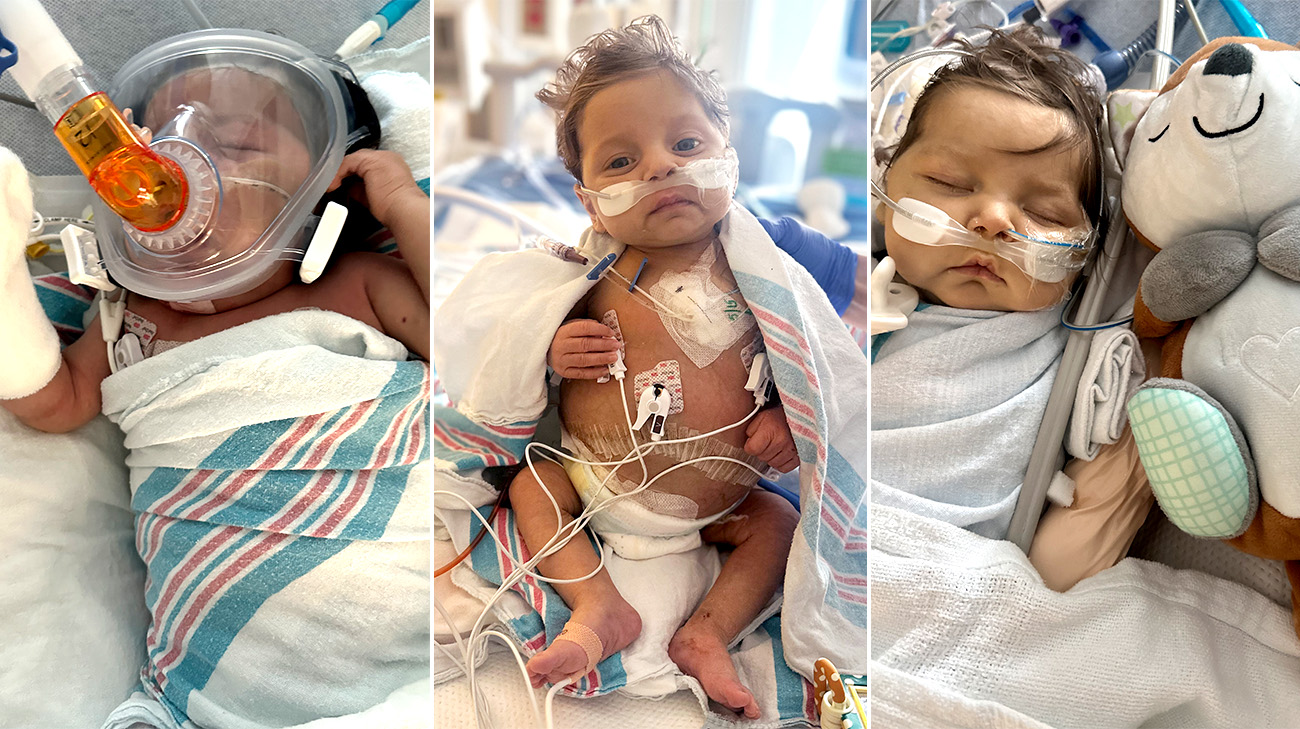
Leading up to and following his transplant, Sonny spent multiple months in the hospital. (Courtesy: Katie White)
When considering becoming a living organ donor, Sandy didn’t know who she’d end up helping but felt called to do it after her husband, Jim, needed a liver transplant. In 2022, Sandy and Jim traveled from where they live in Western New York to Cleveland Clinic main campus in Cleveland, Ohio, for his transplant procedure. Later, when Sandy ultimately decided to become a living donor, she knew she wanted to come back.
“I decided to go to Cleveland Clinic because our experience with my husband’s surgery was absolutely incredible. We implicitly trust the liver team there,” says Sandy.
After contacting Cleveland Clinic’s liver transplant team, Sandy underwent an array of tests to confirm she’d be a good candidate and that it’d be safe for her to donate a portion of her liver. “The most important principle in living donor transplant is to do no harm to the donor. Everything is constructed around the safety of the donor,” says Choon Hyuck David Kwon, MD, PhD, the Director of Minimally Invasive Liver Surgery in Cleveland Clinic's Digestive Disease Institute.
Sandy says Dr. Kwon made her feel at ease throughout the process, and once approved, she decided she would donate a portion of her liver’s left lobe when the time came. When it comes to living donor liver transplants, up to two-thirds of the liver can be safely removed as long as the tissue is healthy and able to regenerate. In May 2023, Sandy and Sonny were matched and their surgeries were scheduled.
“I never had surgery before, so I was nervous at first. I just focused on all the good this would do,” says Sandy.

Sandy is thankful she was able to undergo her procedure laparoscopically, meaning minimally invasive, as it cut down on her recovery time. She was walking multiple miles shortly after her surgery. (Courtesy: Sandy Flash)
“We did have a sense of relief when we found out. It’s like we had just witnessed a miracle with a match being found in time. But at the same time, the reality of the transplant surgery set in,” says Katie.
Since this involved a pediatric patient, doctors only needed a small portion of Sandy’s liver – about 15% to 20%. That’s because the portion of the liver transplanted will grow along with the child’s body. Sandy knew the surgery carried little risk of complications and says another reason she came to Cleveland Clinic is because it’s one of the few transplant centers in the United States to perform this type of procedure laparoscopically.
Dr. Kwon explains, “With a minimally invasive surgery, the pain medication needed after is about half of what we usually use with traditional surgery. The recovery time is also cut down by around 50%.” In Sandy’s case, she was able to quickly go back to work within six weeks and felt completely back to normal around 12 weeks after the surgery.
As for Sonny, he was battling end-stage liver disease with other organ functions beginning to deteriorate as well ahead of his surgery. Thankfully, they found the donor match in time, and in May 2023, he underwent his transplant procedure, which was performed by Koji Hashimoto, MD, PhD, the Director of Liver Transplantation at Cleveland Clinic – the same surgeon who led Jim’s transplant surgery.
“From the first time I met Dr. Hashimoto, I had this ultimate trust and knew he was going to do what’s best for my baby,” says Katie.
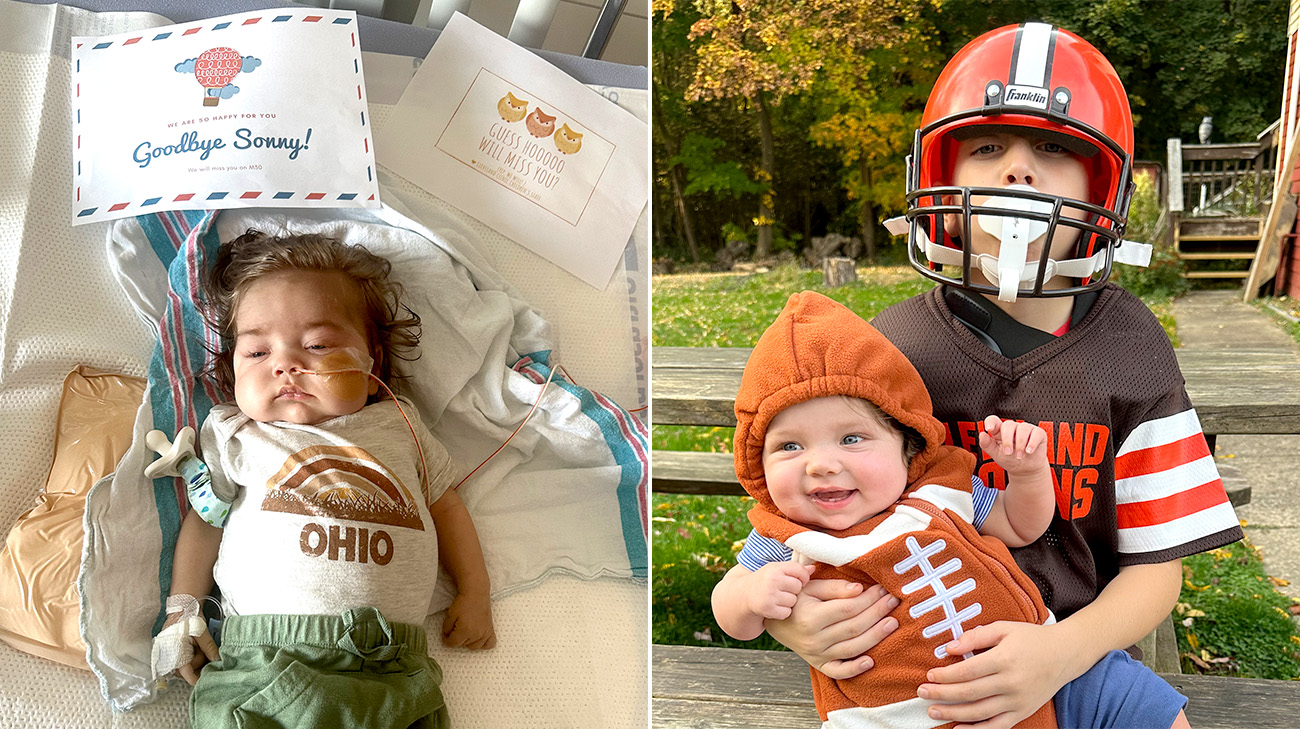
Katie says her family celebrated a second homecoming when Sonny returned home following his transplant procedure. (Courtesy: Katie White)
Despite experiencing some complications before and after transplant, Sonny was able to come home after spending months in the hospital. While happy to have everyone under one roof again, Katie and her husband had to prepare for the care Sonny would need in the months following transplant.
“Sonny was still on a feeding tube, so we learned how to manage his feeds through that. We also had to get a schedule together and make sure he was taking all his medications on time,” says Katie.
Sonny continued making progress as the months went by and was soon feeding on his own. Moving forward, Sonny no longer needs to worry about biliary atresia impacting his liver function, but he remains on immunosuppressants to prevent transplant rejection. Now, 1-year-old Sonny gets to enjoy everything a typical child would – from climbing things to wrestling with his older brother.
“As of today, Sonny’s so happy and bubbly. You wouldn't even know he’s gone through everything he did,” says Katie.
“Sonny has caught up in his growth and development, and he’s just a remarkable child. I call him a rascally rabbit – he loves to play ball and hide and seek. The progress he’s made is phenomenal,” adds Dr. Goldman, who says it took a multidisciplinary team to care for him.
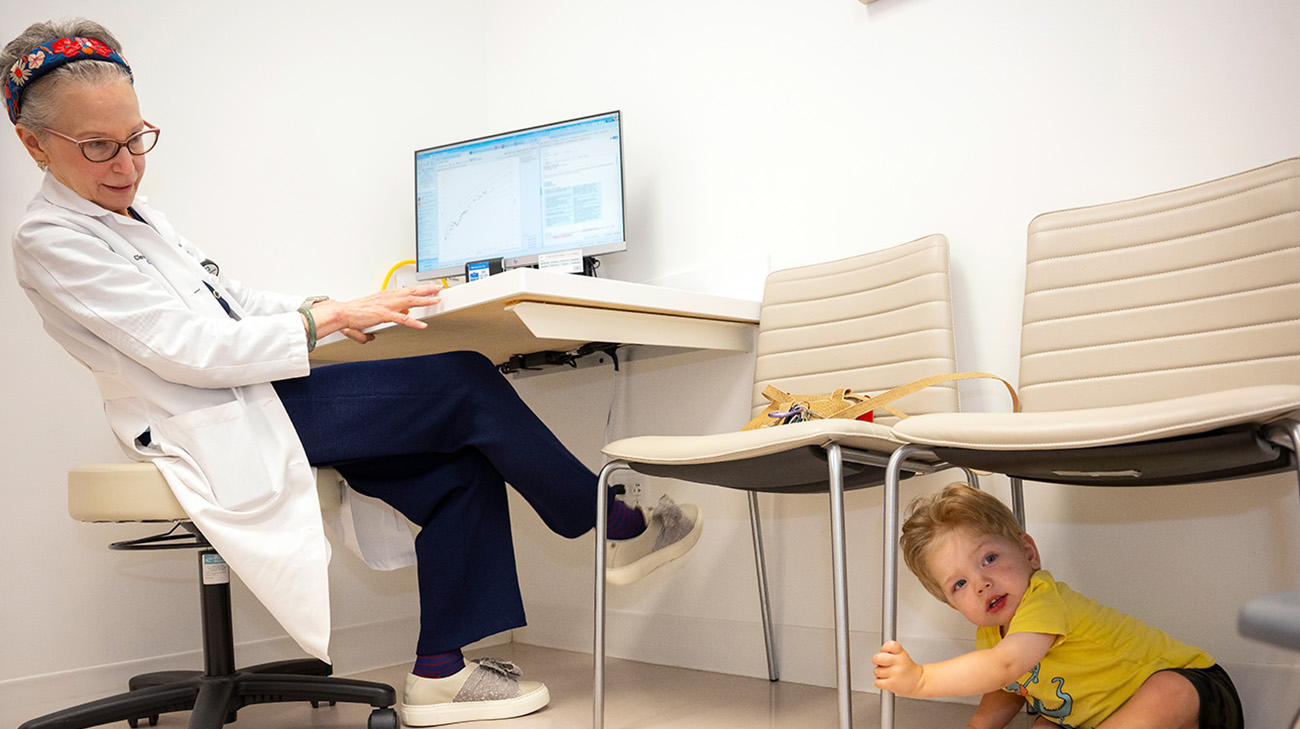
Sonny with Dr. Deborah Goldman at a follow-up appointment. Katie says Dr. Goldman has been excellent since the beginning of Sonny’s health journey and takes the time to explain things thoroughly. (Courtesy: Cleveland Clinic)
Once Sonny reached a good place in his recovery, Sandy and Katie worked with the transplant team to arrange a meeting. Sandy knew little about the life she helped save, and Katie was eager to meet the woman who had selflessly donated a portion of her liver to her son. In July 2024, the two families met at Cleveland Clinic main campus.
“When I walked into the room, I didn’t know what to expect. Then all of a sudden, Sonny came toddling up, and I just went, ‘Oh my God.’ It was amazing to see this beautiful, energetic boy with a huge smile on his face. I asked what his name was and when Katie said Sonny, I thought, ‘Perfect,’” smiles Sandy.
Katie adds, “Going into the meeting, I was a little bit nervous because you have to relive all the events that have happened up until that day, and you want to say the right things. But it was just like this weight lifted off our shoulders when we met. I felt a sense of relief being able to see the person who saved my baby’s life.”
Katie and Sandy plan to stay in touch and are excited to watch Sonny grow thanks to the gift of organ donation. After going through this experience, they hope sharing their story can help others.
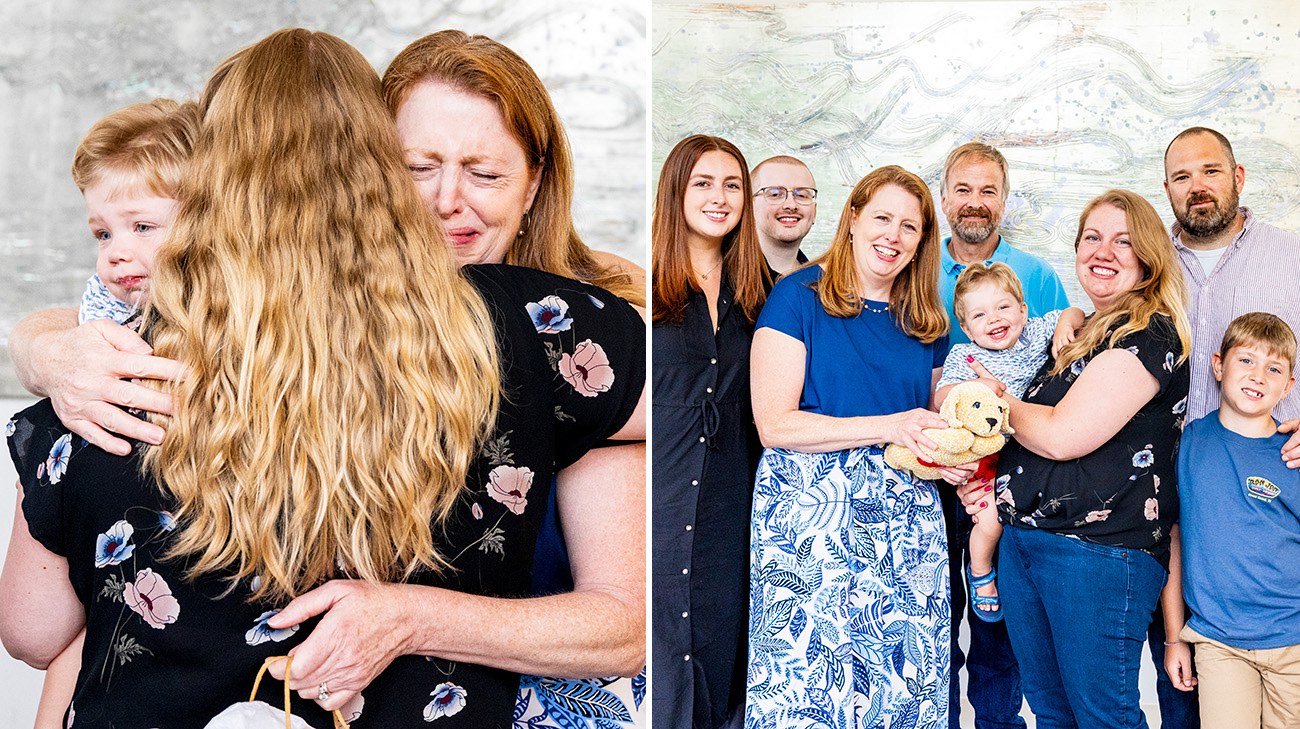
Katie and Sandy say they’re grateful both their families were able to come together and meet after Sonny recovered from his transplant. (Courtesy: Cleveland Clinic)
“If you have a child going through something like this, you have to take it day by day. And if it seems impossible to do that, take it hour by hour, minute by minute,” says Katie. “I’m insanely grateful Sandy became an organ donor and hope others consider becoming one as well.”
“When it comes to organ donation, I think many people, like me, don't really think about it until it touches you personally. I’m sharing my story to hopefully inspire others to consider becoming a living organ donor. The rewards of the experience, knowing that you helped someone in dire need, are incredibly fulfilling,” says Sandy.
Related Institutes: Digestive Disease & Surgery Institute , Cleveland Clinic Children's

